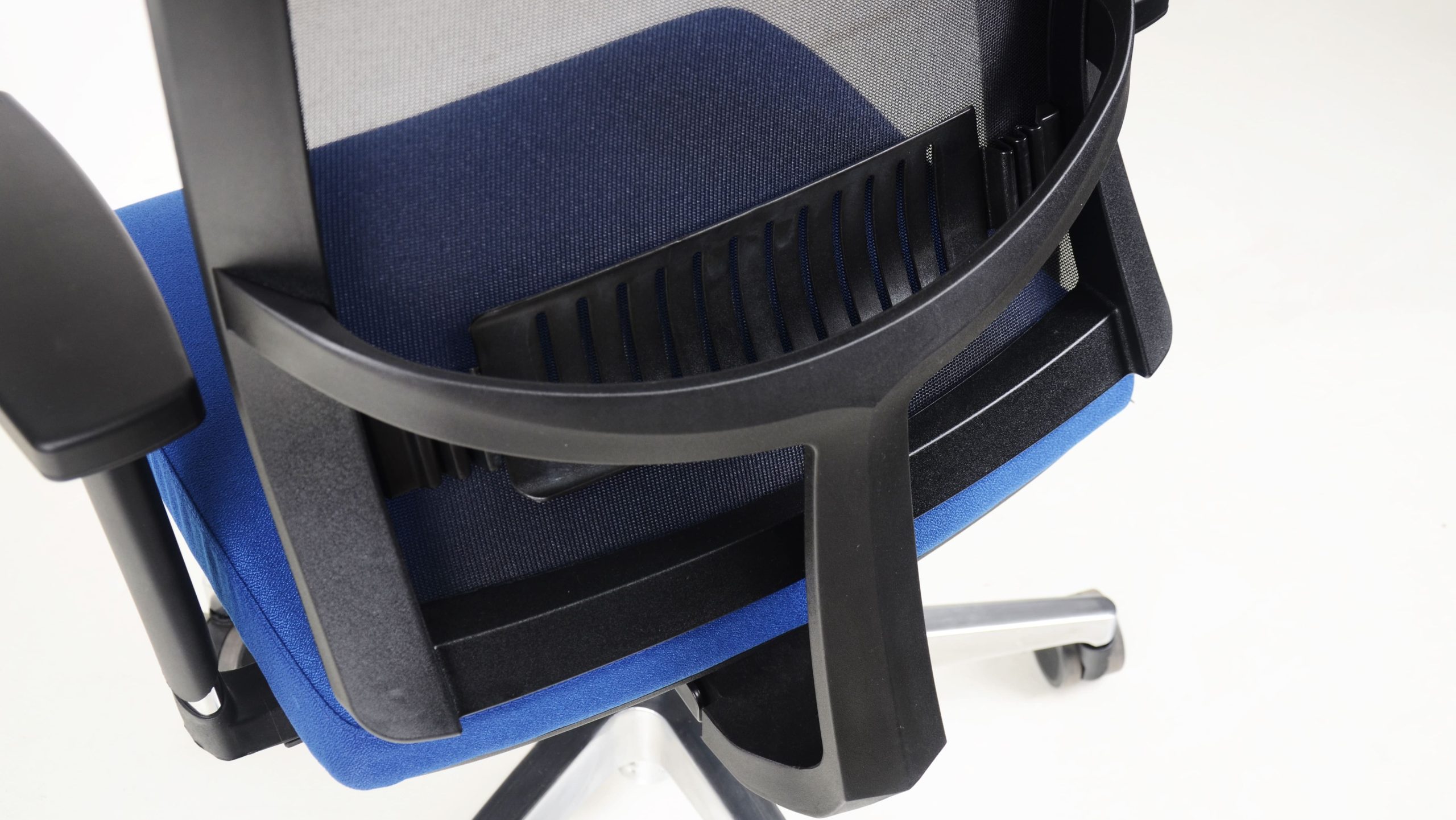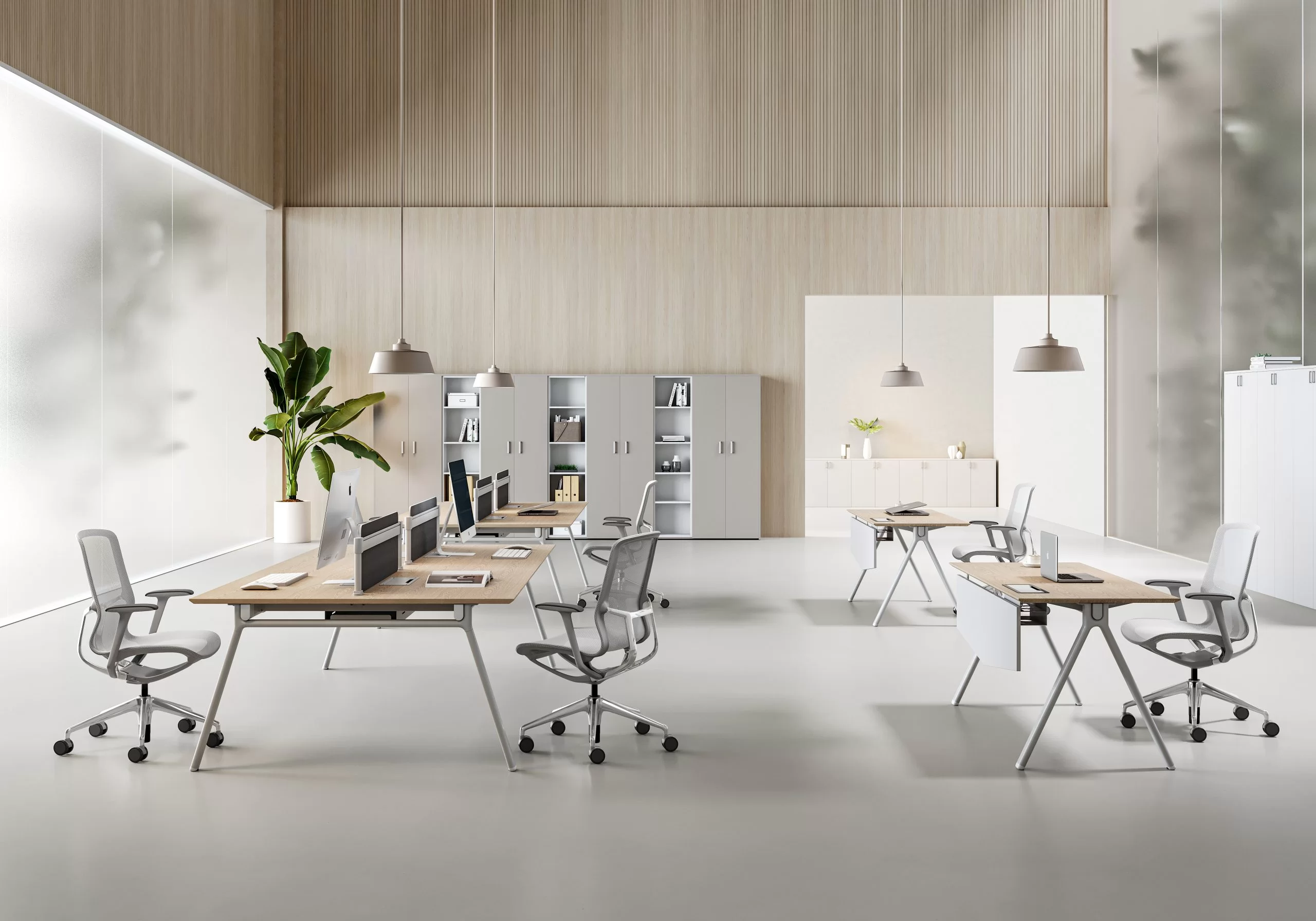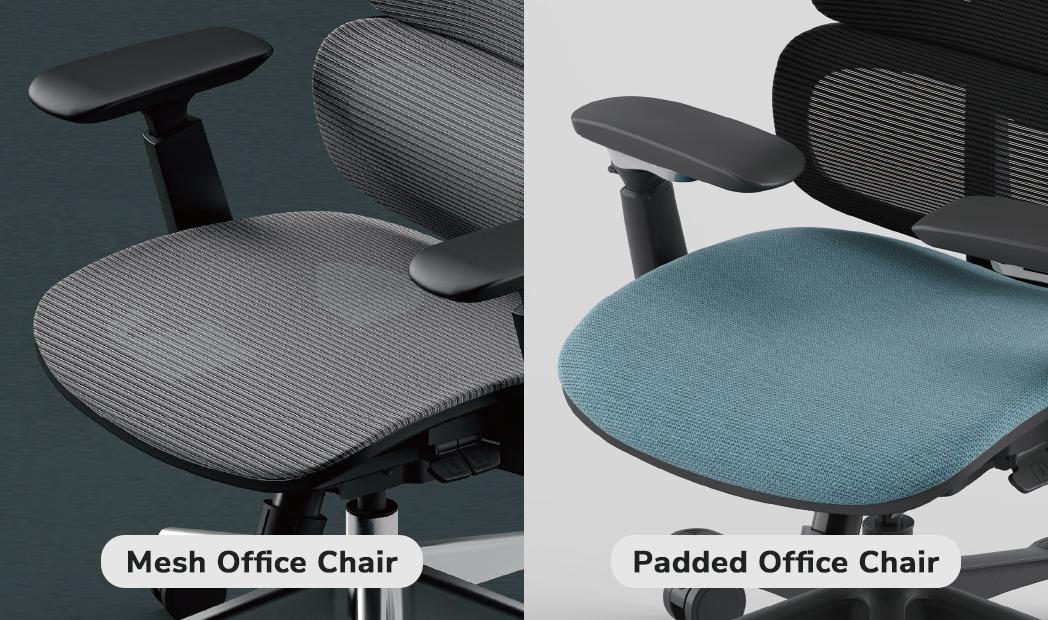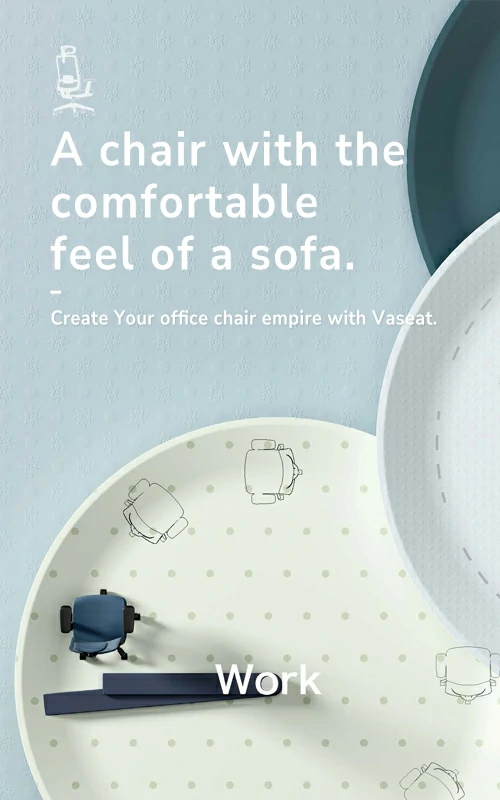Choosing the right office chair goes beyond style. The materials used for the seat and backrest play a decisive role in comfort, health, and long-term usability. Among the most popular options, mesh vs cushion office chair comparisons often spark debate. Should you go for a breathable mesh chair or a plush cushioned seat? This guide breaks down the strengths and weaknesses of each so you can make the right choice for your workspace.
What Are Mesh and Cushion Office Chairs?
- Mesh office chairs use woven synthetic fibers for the backrest or seat. They provide airflow and a light, modern look.
- Cushion office chairs rely on padded foam or upholstered materials, offering softness and traditional comfort.
Both options dominate the ergonomic seating market, but the experience they deliver can be very different.
Key Comparison Factors
When comparing mesh vs cushion office chair designs, buyers usually look at:
- Breathability – Does it keep you cool during long hours?
- Support – How well does it align the spine and distribute body weight?
- Comfort – Short-term softness versus long-term sitting performance.
- Durability – How well does the material hold up over time?
- Aesthetics – Does it match your office style?
- Price – Entry-level vs premium options.
- Maintenance – How easy is it to clean and keep fresh?
Mesh Office Chairs: Pros and Cons
Advantages
- Excellent airflow: Mesh fabric prevents heat build-up, perfect for warm offices.
- Lightweight design: Slim profiles make them easy to move and fit into modern spaces.
- Adaptive support: Quality mesh can flex with your body, offering ergonomic lumbar alignment.
- Low maintenance: Mesh resists spills and odors better than fabric cushions.
Drawbacks
- Less cushioning: Prolonged sitting may feel firm compared to padded seats.
- Stretching over time: Cheap mesh may sag or lose tension.
- Limited warmth: Not ideal for cold climates or offices with strong air-conditioning.
- Potential wear and tear: Mesh can snag or rip if handled roughly.
Cushion Office Chairs: Pros and Cons
Advantages
- Soft comfort: Foam padding offers plush seating and a cozy feel.
- Even weight distribution: High-density foam reduces pressure points during long work sessions.
- Versatile aesthetics: Cushions can be covered in fabric, leather, or synthetic materials to suit any décor.
- Better warmth: Cushioned seats retain heat, making them more comfortable in cooler environments.
Drawbacks
- Heat retention: Poor breathability may cause discomfort in hot weather.
- Potential sagging: Low-density foam compresses and loses shape over time.
- Maintenance challenges: Fabric can absorb odors and stains, while leather requires careful care.
- Heavier design: Bulkier than mesh alternatives, which may limit mobility.

Mesh vs Cushion Office Chair: Who Should Choose Which?
| User Scenario | Mesh Office Chair | Cushion Office Chair |
|---|---|---|
| Hot & humid climates | Breathable mesh prevents sweat | Cushion may trap heat |
| Cold environments | May feel too cool | Provides warmth |
| Budget-friendly option | Basic mesh is often more affordable | Quality cushion models can be pricier |
| Modern, minimalistic design | Slim and stylish | Often bulkier |
| Long sitting hours | Best with premium mesh tension support | High-density foam provides lasting comfort |
| Luxury & traditional aesthetics | Limited design variety | Upholstered cushions offer premium looks |
How to Pick the Right Office Chair
When deciding between a mesh vs cushion office chair, keep these buying tips in mind:
- Check material quality: High-density foam cushions and premium elastic mesh last longer.
- Test support: Look for lumbar adjustment and ergonomic contours.
- Evaluate durability: Ensure the chair frame matches the expected weight capacity.
- Think about climate: Mesh suits hot offices, cushion works better in colder environments.
- Balance comfort vs aesthetics: Some hybrid models combine mesh backs with cushioned seats for the best of both worlds.
Frequently Asked Questions (FAQ)
Q: Are mesh chairs more ergonomic than cushion chairs?
Not always. Ergonomics depend on frame design, lumbar support, and adjustability—not just the material.
Q: Do cushions wear out faster than mesh?
Low-density foam tends to flatten over time, while mesh can sag if poorly made. Premium versions of either can last years.
Q: Which chair is better for back pain?
Both can help if paired with proper lumbar support. For chronic back pain, focus on ergonomic adjustability over material.
Final Thoughts
The choice between mesh vs cushion office chair depends on climate, comfort preferences, and office style. Mesh chairs provide breathability, a modern look, and lighter support, while cushion chairs offer plush comfort, warmth, and traditional aesthetics.
Neither option is universally better. For hot environments and sleek design, mesh is a strong fit. For long sitting hours or colder spaces, cushion seating may be more suitable. Hybrid models that combine both materials can deliver a balanced solution with ergonomic benefits.



